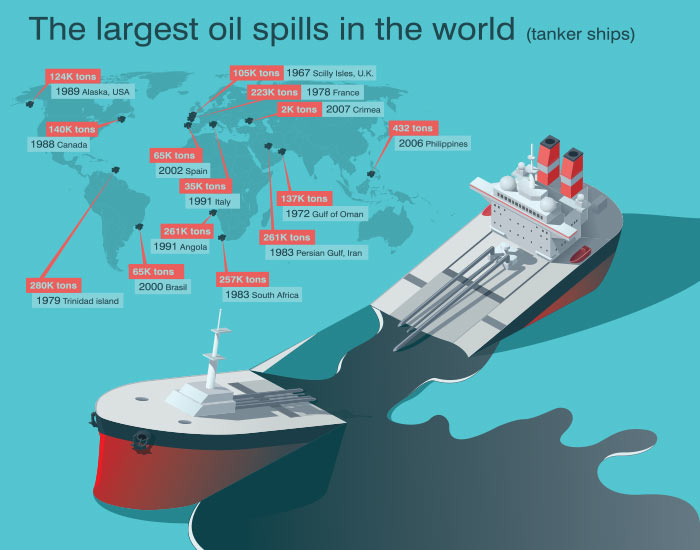
International Convention on Civil Liability for Oil Pollution Damage (CLC)
Adopted on 29 November 1969; Entry into force: 19 June 1975;
This was replaced by 1992 Protocol that was adopted on 27 November 1992; Entry into force: 30 May 1996
The Civil Liability Convention (CLC Convention)was adopted to ensure that adequate compensation is available to persons who suffer oil pollution damage resulting from maritime casualties involving oil-carrying ships. The CLC Convention places the liability for such damage on the owner of the ship from which the polluting oil escaped or was discharged. The CLC Convention applies to all seagoing vessels actually carrying oil in bulk as cargo, but only ships carrying more than 2,000 tons of oil are required to maintain insurance in respect of oil pollution damage.
You May Also Like: What is FAL Convention & What are the standardized forms under this convention?
The CLC Convention covers pollution damage resulting from spills of persistent oils suffered in the territory (including the territorial sea) of a State Party to the CLC Convention. It is applicable to ships which actually carry oil in bulk as cargo, i.e. generally laden tankers. Spills from tankers in ballast or bunker spills from ships other than other than tankers are not covered, nor is it possible to recover costs when preventive measures are so successful that no actual spill occurs. The shipowner cannot limit liability if the incident occurred as a result of the owner’s personal fault.
The compensation limits were set as follows:
1) For a ship not exceeding 5,000 gross tonnage, liability is limited to 3 million SDR
2) For a ship 5,000 to 140,000 gross tonnage: liability is limited to 3 million SDR plus 420 SDR for each additional unit of tonnage.
3) For a ship over 140,000 gross tonnage: liability is limited to 59.7 million SDR.
Here SDR means Special Drawing Rights.
What is SDR and its value?
The IMF ( International Monetary Fund ) created the SDR as a supplementary international reserve asset in 1969, when currencies were tied to the price of gold and the US dollar was the leading international reserve asset. The IMF defined the SDR as equivalent to a fractional amount of gold that was equivalent to one US dollar.
When fixed exchange rates ended in 1973, the IMF redefined the SDR as equivalent to the value of a basket of world currencies. The SDR itself is not a currency but an asset that holders can exchange for currency when needed. The SDR serves as the unit of account of the IMF and other international organizations. The SDR value in terms of the US dollar is determined daily based on the spot exchange rates observed at around noon London time.
Currently 1 SDR = 0.0037 $ and keeps changing around this range on a daily basis.
Ref: IMF website
